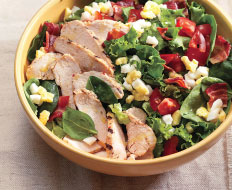Though not new, secret and hidden menus have taken hold in recent years as social media–savvy diners share off-the-menu experiences with potentially viral audiences.
And today, more quick-service brands are finding that a secret menu can offer guests a fun and unique experience worth coming back for.
“We love having [secret] things our customers and team members have made with ingredients we already offer,” says Allison Doyle, director of marketing for Boston-based burrito chain Boloco, a fast casual with more than 20 units. She adds that the secret menu developed both from the brand’s organic growth and strategic use.
“We like to say we are all about options,” Doyle says. “Our secret menu comes from constantly evolving [and] simple menu edits customers have asked for.”
For instance, one of Boloco’s more famous secret items, the Flaming Caesar, is a combination of the Buffalo and Caesar burritos. Last fall, the restaurant highlighted past limited-time-offer items as a secret menu through its Friends with Benefits campaign, encouraging guests to discover it on their own.
Not all restaurants with so-called secret menus intended to have them, however. In-N-Out Burger, a 280-store, West Coast chain, has a near cult-like following for its secret menu, but executives are careful to dispel the notion they ever invented the menu purposely.
Carl Van Fleet, vice president of planning and development, says in an e-mail to QSR, “We don’t see ourselves as having a secret menu at all.”
In fact, In-N-Out Burger’s secret menu grew organically, a result of the brand responding to customer requests for variations on basic menu items.
“Over the years, many of those variations were given names, usually by the customers who frequently ordered their burger that way,” Van Fleet says. “Some of the names just stuck.” To further distance the brand from the notion of a company-created secret menu, In-N-Out has added a page to its website called “The Not-So-Secret Menu.”
Dennis Lombardi, executive vice president of foodservice strategies for WD Partners, says it’s part of the fun for a brand to say it doesn’t have a secret menu when everyone knows it does. He also says there is a simple way to tell the difference between a secret menu and a group of items that are simply customized often.
“If a thing has a name and people know about it, it’s a secret menu,” Lombardi says. “You have one when customers think you have one, and it’s really a compliment to the brand.”
While restaurants may be at the mercy of customers who help create an organically developed hidden menu, having one can present some operational challenges, too. Lombardi says management needs to consider the same factors they might have to consider when addressing items that customers tweak to their personal tastes.
“No. 1, there is an increased complexity of offering a higher number of menu items—meaning more SKUs and possible waste—and two, it will put more stress on kitchen employees,” he says. “Can you respond in terms of skill base and equipment without compromising throughput speed of service?”
Because so many restaurants offer customization, Lombardi says, it’s likely the counter crews will know how to price secret items using point-of-sale modifiers, and the demand for ingredients won’t significantly stress inventory levels.
And in terms of training, Doyle says, “the whole secret menu is a fun thing that team members tend to share with each other. They learn quickly.”
Andre Neyrey, president of Manhattan Restaurant Brokers and Consultants, says there isn’t a lot a brand can do to stop a secret menu that grows organically. “You have a choice to disappoint a customer or get on board,” he says. “Your diners are telling you what they want.”
He suggests restaurants use the opportunity to test new items on a bigger scale. “It’s a tremendous thing to roll out new items traditionally, with menu books, staff meetings, ordering, and all, especially with multiple locations,” he says.
The secret menu–type roll out allows restaurants to promote and test new items using much less expensive social media channels and the existing customer database.
That’s exactly what Panera Bread is doing with its new Hidden Menu, featuring six protein-rich power food items. Scott Davis, Panera Bread’s chief concept officer, says it’s tricky managing messages for new products on a wide scale. When he created a healthy-option product line, he knew it was too risky to market with traditional investment or intensity.
To play it safe, Davis decided to have some fun with the idea of a buzzworthy hidden menu. “It’s less about the secret and more about trying to find ways to communicate to smaller audiences that make sense,” Davis says.
Customers who have joined the MyPanera! loyalty program receive e-mails about the hidden menu, and the Panera website’s nutritional page features a link to it. Though Panera’s new hidden menu isn’t promoted through traditional marketing outlets like television and isn’t listed on menuboards, every employee, from cashier to production staff, understands the menu.
“There’s a button on the register, procedures in place—same training, background, and documents as for any product we create,” Davis says.
Whether it’s a customer-driven menu or one that serves as a strategic marketing push, restaurants should always consider the consumer when dealing with secret menus, Neyrey says. “If you can execute a secret menu well and keep it organically cool, everyone wants to be in on it.”
Lombardi says that as long as the hidden menus aren’t overly complex, they can serve as a positive part of a restaurant’s cachet—one that guests appreciate.
“Customers really work at learning how to correctly order a coffee in barista language at Starbucks,” he says. “Wouldn’t you like to have them working that hard to discover your menu?”
There is always the fear that diners will be disgruntled to discover they’ve not been privy to the “secret.” What then?
“I say, ‘Get over it. Welcome to the inner circle,’” Doyle says. “‘Now you’re on the inside.’”






